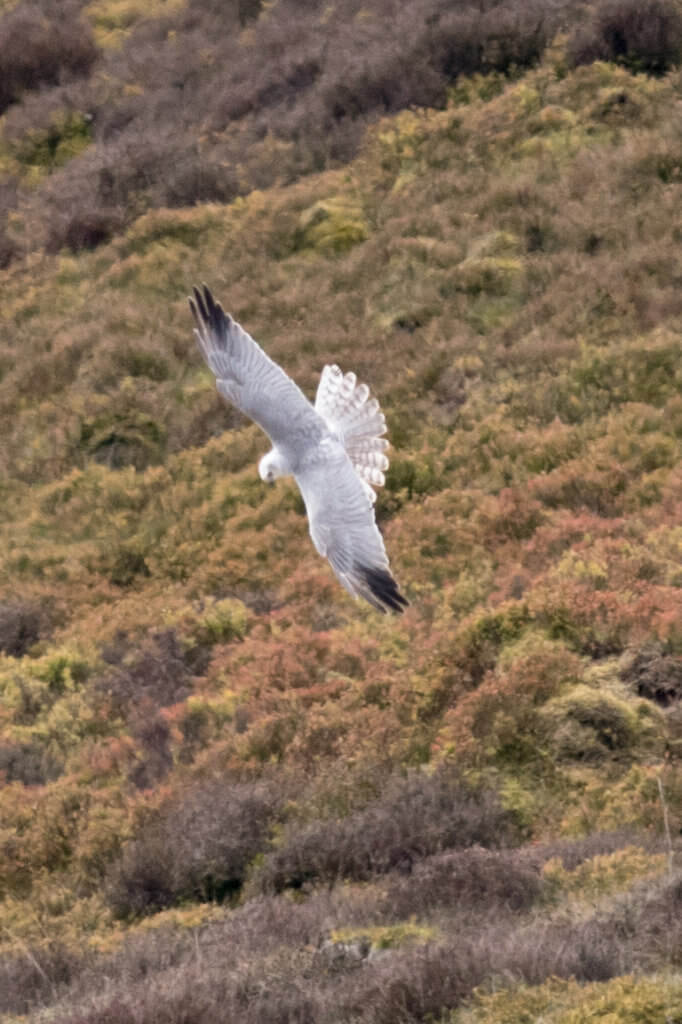
I’m interested in Pallid Harriers for a number of reasons; they are very beautiful birds, they are expanding their range dramatically westwards in an interesting manner and I have a bet with my friend Ben Koks (which I will be happy to lose) that Pallids aren’t going to have bred in the UK by the end of 2021.
This year, it seems, I came close to losing that bet as a pair bred in the Pas-de-Calais in northern France – almost within sight of Kent (see Birdguides here for story and a super image of a displaying male Pallid Harrier in Lancashire in 2017).
This was the first French breeding record and further south a male Pallid nested with a female Montagu’s.
Other posts about Pallid Harriers:
Male Pallid Harrier sets up home in Bowland, 1 May 2017
Pallid Harriers nest successfully in The Netherlands, 14 july 2017
Those fledged Pallid Harriers from The Netherlands, 28 July 2017
Stand by for more Pallid Harriers, 16 December 2018
Pallid Harriers breed in Czech Republic for first time, 21 July 2020
[registration_form]
I have a passion for all raptors but especially for harriers. It is a constant regret that I was house sitting in Wales at the time of the displaying male in Bowland and didn’t see it. I have seen Pallid in the UK the ringtail at Warham Greens in Norfolk some years ago.
I have, however, seen a male well in Bulgaria along with several ringtails, fantastic birds. A day of Montagu’s, Marsh and Pallid Harriers along with both Storks, Glossy Ibis, numerous waders, Booted and Short toed Eagles.
It would be great to have them nest here but not on a grouse moor, they are decidedly unsafe places for any harrier of whatever species, despite claims to the contrary.
I have very mixed feelings about Pallids becoming established here – will they hybridize and replace Montagu’s? It seems pretty clear that Montagu’s are at such a low ebb here, in part at least, because of persecution – heaven knows why! Much better that Natural England tried to boost the Monty’s population rather than wasted time and effort on the dreadful southern Hen Harrier “reintroduction”.
I think most hybridisation events have been Hen/Pallid Bob. Then Pallid and Hen Harriers are fairly closely related, whilst believe it or not Montagu’s is much closer to Marsh Harrier. There is as far as I can find only one proven hybridisation of Pallid/Montagu’s, in Finland, Forsman (2016) suggests that this was an exceptional event as older hybrids would be easier to ID than juveniles and none have been recorded.
We are right on the edge of Montagu’s Harrier range, although of course in the 1940s and 50s we did have a substantial population, seen off one suspects by pesticides and persecution. Although Clarke (1996) fails to document fails to document the moorland Yorkshire nests (mainly North York Moors but a few in Nidderdale and Wharfedale). I suppose that Montagu’s Harrier boosting could be attempted using brood management ( chicks from nests rescued from crop fields in France or Spain. However given the penchant here for shooting harriers even in the lowlands it is probably a bad idea.
Told you I was a “harrier nut.”
Thanks Paul. I love harriers too. Someone got quite upset when I voted the harrier my top bird of the trip at the end of a long Madagascar jaunt, thus ensuring that it appeared in our collective top ten. We only saw one, a male fortunately.
I knew Roger Clarke and we also shared an enthusiasm for wildlife art. Roger died tragically young, with a lot more to give to harriers and ornithology in general.
I don’t quite know how to put this without sounding like a flat-earther, but I do find it difficult to believe some of the relationships DNA analysis is apparently throwing up – I suspect it may depend on what you choose to analyze and how. But what do I know about it – nothing!
Lovely, elegant birds. I once had one in the same flight frame as a hen harrier, the latter looked positively pedestrian in comparison. They would make a welcome addition to the raptors of southern England as opposed to introduced hen harriers. (Not to decry hen harriers, of course, but we all know what a ‘can of worms’ the introduction scheme is).